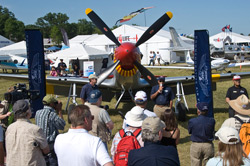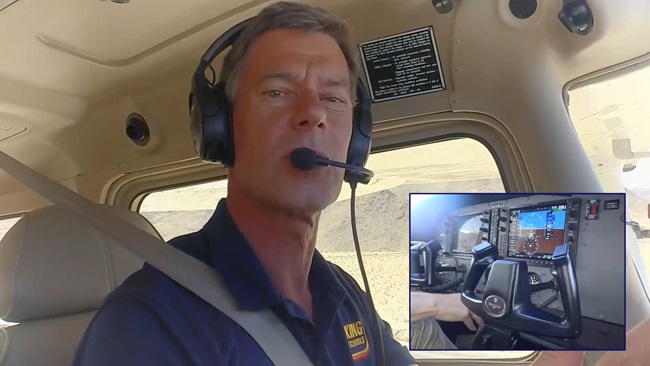 Photo credit: Max Haynes, MaxAir2Air.com
Photo credit: Max Haynes, MaxAir2Air.com
Five years ago, members of the Commemorative Air Force’s Minnesota wing lost an airplane and a friend.
Don Hinz, a longtime CAF member, was killed while flying the group’s P-51C Mustang, a rare airplane that honored the historic Tuskegee Airmen, the World War II unit comprised of black pilots and crews that escorted U.S. bombers over Europe.
Remarkably, members of the Minnesota group decided to pay tribute to their fallen friend by restoring the wrecked aircraft and returning it to flying condition. After tens of thousands of hours of skilled work, and hundreds of thousands of dollars in contributions from more than 25,000 donors, the airplane is better than new.
Members of the restoration team presented their immaculate airplane to a large and appreciative audience at AirVenture on July 29 in Oshkosh, Wis.
“Don Hinz was killed five years ago, but we couldn’t let it rest there,” said Steve Brown, CAF president. “He cared about this project so much. We had to bring it back to life.”
Brad Lang, the son of a Tuskegee Airman, flew the airplane for the first time two weeks ago. Lang, 50, a Delta Air Lines pilot, said flying the Mustang was the highlight of his aviation career and the honor of a lifetime.
“This is the most important thing,” Lang said. “To salute the airmen and tell their story to those who will carry on their legacy in the future.”
Charles McGee, 89, a Tuskegee Airman who flew 54 combat missions, said the P-51 was his favorite airplane to fly.
“The P-51 Mustang still stands out,” he said. “I’m proud to be close enough to this one to touch it.”
The Tuskegee Airmen were part of what was known as the “Tuskegee Experiment,” an effort in the then-segregated U.S. armed forces, to determine whether black service members had the character and capacity to serve as front-line pilots. The group’s 99th Pursuit Squadron trained in Tuskegee, Ala., and proved so effective that U.S. bomber pilots in Europe requested the unit over others.
Doug Rozendaal, leader of the Minnesota restoration effort, said the group’s education efforts are just beginning now that the airplane is flying.
“If Don Hinz was here, he’d tell us to get to work,” Rozendaal said. “He’d want us to go out and tell the story of the Tuskegee Airmen, and that’s what we’re going to do.”



